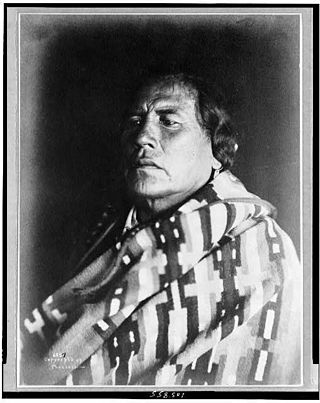Top Qs
Timeline
Chat
Perspective
Richard Throssel
Cree photographer From Wikipedia, the free encyclopedia
Remove ads
Richard Throssell (1882–1933) was a Cree photographer, who documented life on the Crow Reservation at the beginning of the 20th century.

Background
Richard Throssell was born in Marengo, Washington Territory 1883 Sep 18. Throssel is best known for his photographs of the Crow Reservation from 1902 to 1911. These photographs of the Crows portray ceremonies, dances, scenes of everyday life, and individual and group portraits, and are valued as historical documents and as works of art.[1] Though Throssell was not Crow, his Canadian Cree heritage and 1906 adoption into the Crow Nation afforded him access to intimate moments among the Crow people of Montana.
Throssell moved to Montana at age 20 after a long bout with rheumatism, expecting his symptoms to be improved in a drier climate. Throssel lived and worked on the Crow Reservation as a clerk for the Bureau of Indian Affairs. There he was exposed to Crow artworks, including beading and narrative ledger art. He studied photography with Edward S. Curtis and painting techniques, including design and composition, with Joseph Henry Sharp.
Remove ads
Career
Summarize
Perspective
Throssell began to photograph shortly after arriving on the Crow Reservation, but it was not until 1905 that "Throssel submitted his first set of photographs, twenty-nine in number, for copyright."[2] This same year Throssell met ethnographer and photographer Edward S. Curtis. Curtis' influence on Throssell was apparent in Throssell's 1907 set of copyrighted images. In this series Throssell employed vivid lighting with sometimes-staged arrangements, lending towards a much more sentimental view of Crow life. Throssel was also well known for his photographs of "Crow couples, families and children, which are especially striking as the love and warmth expressed by the families are so contrary to how we normally see Native men, women, and children depicted in early photography"[3] (Alison 235). Even though Throssell was part of the early cliché style of depicting Native Peoples his approach also lent itself towards photographs of subjects caught in the moment. The Indian subjects of his photographs expressed a sense of familiarity that cannot be found in the work of non-Indian photographers.
In 1907 Richard submitted a set of images using the artistic influences of his teachers. About this time Richard applied for a copyright for his work from the U.S. Copyright Office who spelled his name incorrectly (one L). Richard struggled to get it changed, eventually he gave up and accepted the Throssel spelling, using it in his professional photographic work.
[4]
Throssell continued to photograph the Crow Nation for the Wanamaker Expedition of 1908 and the Indian Service in 1909. After resigning as photographer for the Indian Service, Throssel with his wife of five years moved to Billings, Montana to open up his own commercial photography business, The Throssel Photographic Company. It was here that he organized a brochure of his photographs, which he was renowned for entitled Western Classics.
In less than a decade, Throssell built a personal collection of nearly 1,000 photographs, including 180 portraits of Crow people, 99 portraits of other American Indians, 186 tipi scenes, 63 Crow sacred and secular ceremonial images, and 352 images of daily life among the Crows of Montana[5] In 1917, after a successful career as an artist, Throssell was twice elected Yellowstone County's representative to the Montana Legislature. Throssell's interest in politics continued until his death in 1933 Jun 10 Helena, Lewis & Clark County, Montana
Remove ads
Notes
References
External links
Wikiwand - on
Seamless Wikipedia browsing. On steroids.
Remove ads
